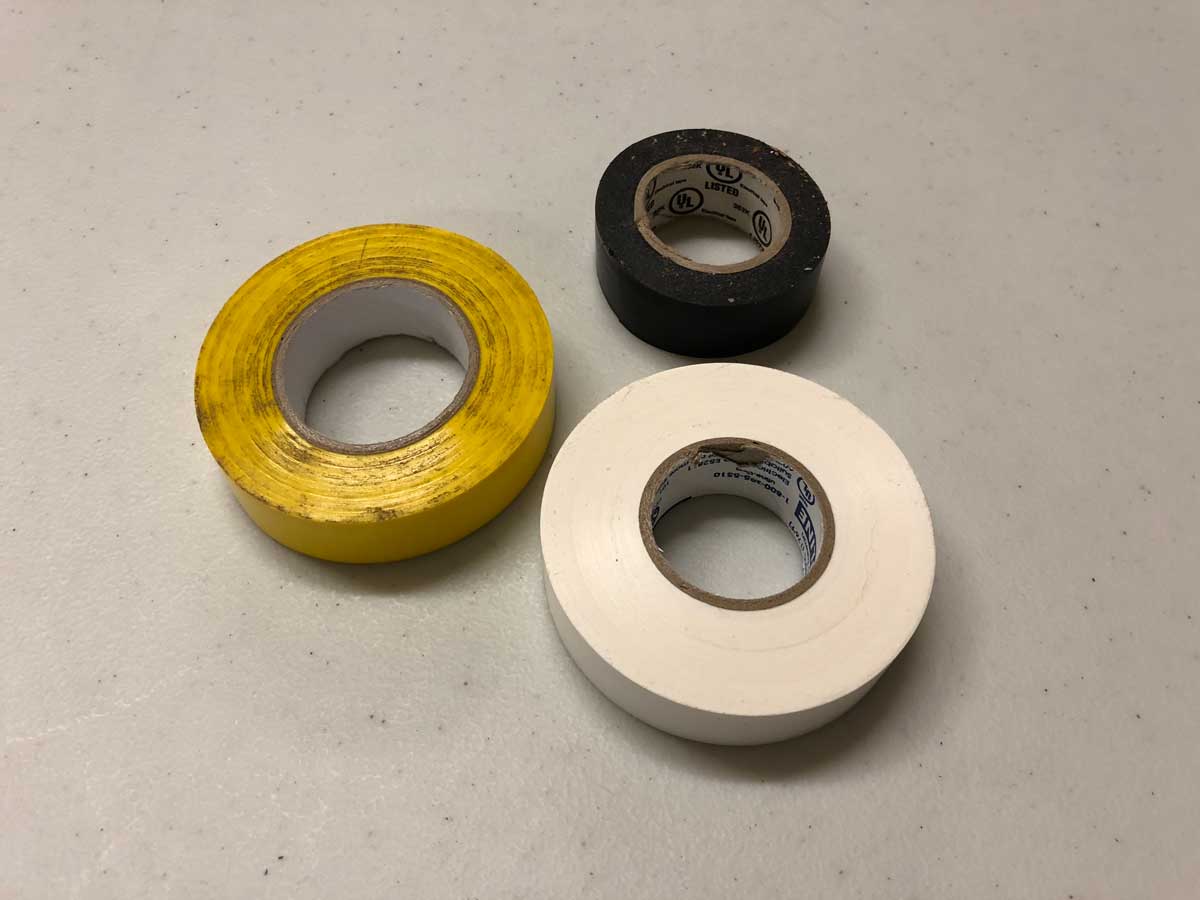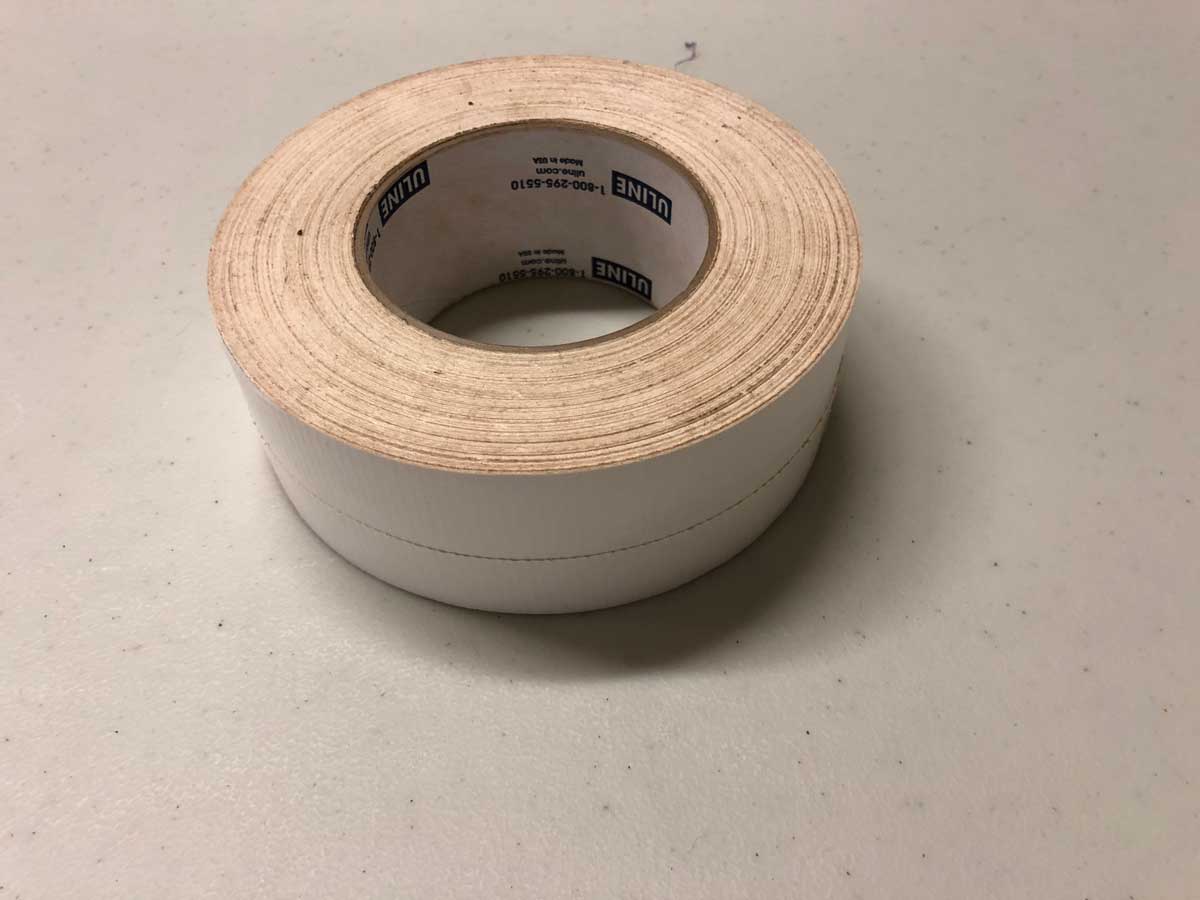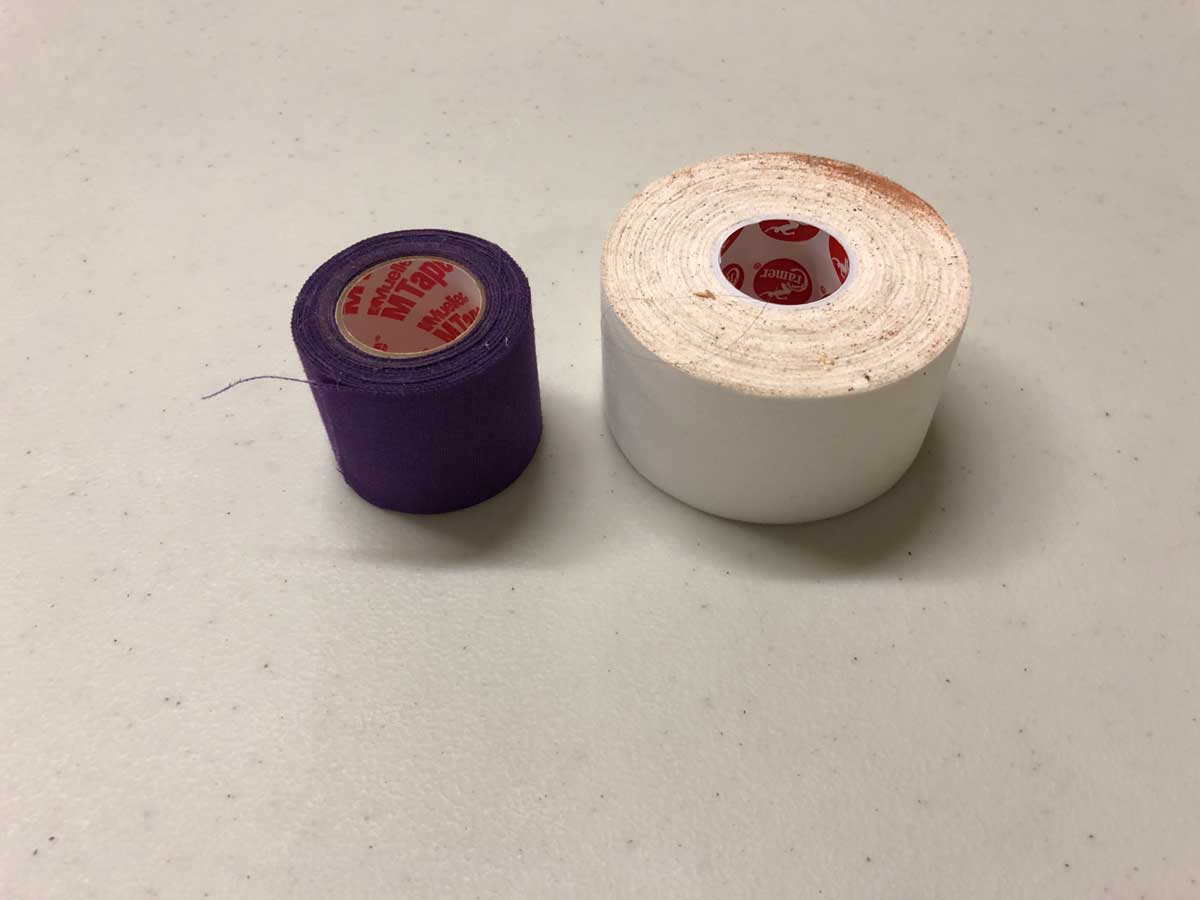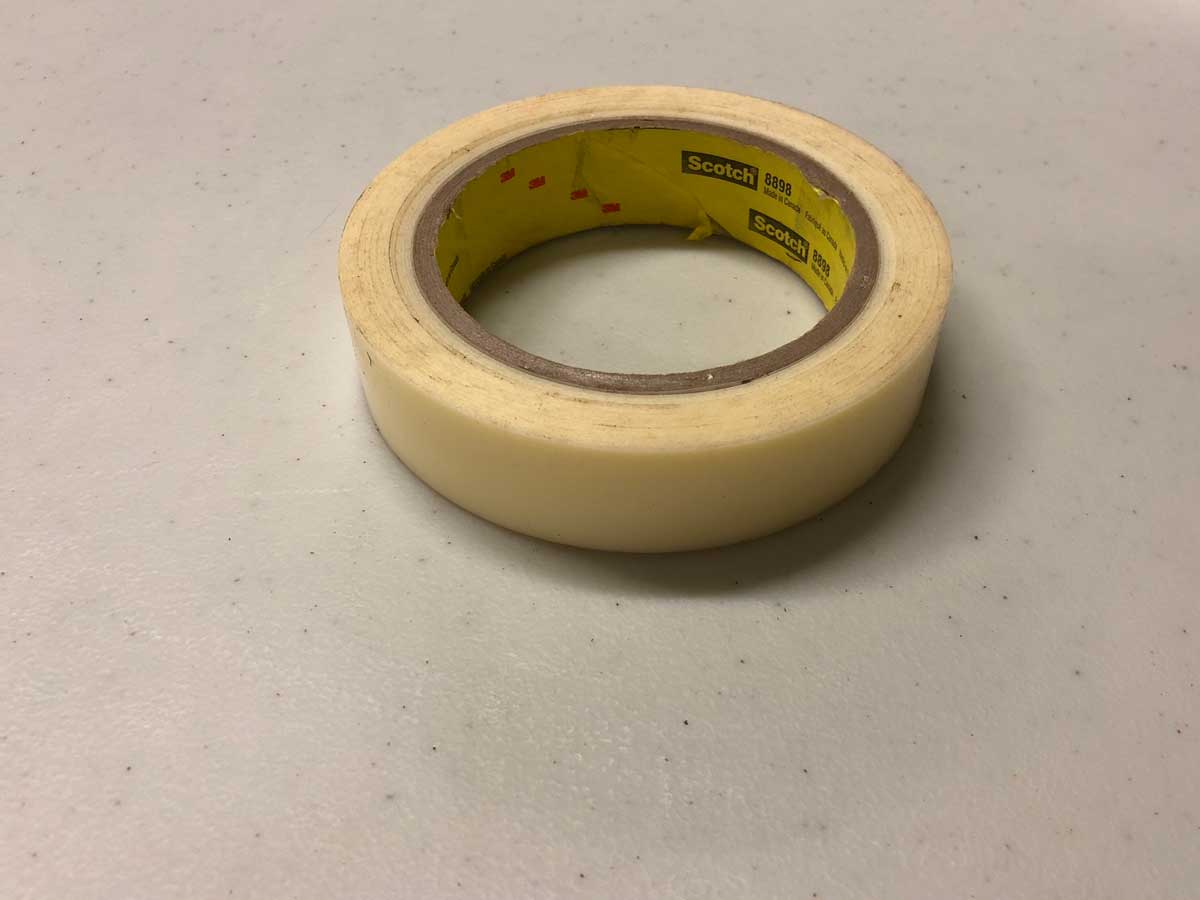You have no items in your shopping cart.
0
You have no items in your shopping cart.
In this article we will be discussing a few different styles of tape that are commonly used for taping highlines, their pros and cons, and when/where to use them in your highline setups. We will conclude with a brief strength test of the various types of tape, with hopes to gain information on the best tapes to use in extreme weather conditions.
The first type of tape I would like to discuss is the Vinyl Electrical Tapes, which are available in a number of colors and various widths. In the shop, we have our White Vinyl Tape and used to carry a Red Vinyl Tape. The color that is most preferred for this style of tape is white. This color will absorb the least heat from the sun. If using a darker color, the tapes tend to melt in the sun, rendering them far weaker than they originally were, plus they will become gooey and leave terrible residue on the line when removed.

This class of tape is super accessible and quite cheap, which makes it attractive as a primary tape for taping highlines. It leaves very little residue on the line and sticks quite well to itself for good slider tape construction. However, the strength of this tape is quite low and it's far too easy to break/rip. This makes it no great as a primary highline tape because it will break quite often in bad weather or with a high number of leash falls.
Where this tape excels is in its size. The size of a roll is perfect to keep with you on your harness. The easy rippability makes it great for this as well. Having a roll of Vinyl tape on your harness with a soft shackle or carabiner is a great idea for easy fixing of tapes in the middle of the line. This is the best usage for this type of tape.
The second type of tape I would like to discuss is Duct Tape. This type of tape is super common all around the world and is available in a number of strengths, types, and colors. It's a fiber-reinforced tape in the longitudinal direction with a weak natural fiber, in most cases. It's easy to rip across the width, but is fairly strong across the length. It serves well as a primary highline tape in low to moderate weather areas on sub-100m long highlines.

The rolls of Duct tape are quite long and they are typically very cheap. As with Vinyl tape, white is the best color to go with. Also, name-brand Duct Tape is worth the extra few dollars as it's typically made with a higher quality adhesive that leaves far less residue on the line compared with cheaper alternatives. Stick with name brands such as Scotch (3M).
Most Duct Tape comes in a 2-inch width, which can be a hassle to work with as a primary highline tape. If you choose to use this type of tape, I would recommend ripping it in half to create 1-inch wide strips. This will effectively double the amount of tape you have with each roll as well.
The next type of tape I would like to discuss is Athletic Tape, or cloth tape. This tape is made from cotton with a rubber-based adhesive. It's fairly strong and not so easy to rip across the width. It comes in a variety of widths with roll lengths around 10 - 15m (30 - 50 feet).

This type of tape used to be very popular to use as a primary highline tape. However, more recently, the community has shifted away from using Athletic tape at all, for good reason. Although the tape has a great feel to it and has a decent strength, it's terrible for leaving residue on the line, especially when there is any direct sunlight or ambient heat. This residue causes major issues when using slider tapes as the sliding-aspect of the tape is rendered useless in a lot of cases.
This is an interesting style of tape. It's a high strength tape at roughly 160 lbs per inch, with incredible adhesion properties that allow it to be reused. It's a specialty carton sealing tape from 3M that we tried out at GGBY this year.

The tape works especially well for lines that you will be tapping and untapping frequently. The adhesive allows the tape to be reused with little degradation. The strength ensures that the tape will not break so easily in harsh weather or on a line where there will be a high number of whippers.
I don't see any downsides to this tape other than the price. It typically goes for around $20 a roll and requires a Filament Tape Tool to cut as it's impossible to rip with your hands.
This is another new style of tape that has been seeing some use. It's another polypropylene tape that is reinforced with fiberglass pieces to make it extremely strong. Some of these tapes are as strong as 600 lbs/inch. The more practical ones run in the 250 lbs/inch range. The rolls are typically in the 50m range and the width is just under an inch. Three colors are available, but white is the most practically from a cost perspective.

This style of tape is my preferred style for primary highline tapes. The shear strength that the tape has combined with the high adhesion make it ideal for taping big highlines. You can keep your tape spacing large without worrying about there not being enough tapes to hold the backup line up. Also, the specific style of tape we carry in the shop ( Fiber-Reinforced Slackline Tape ) is thicker than some other fiber-reinforced tapes and so it performs well when falled upon or stepped on.
The only downside to this tape is that it requires a tool to measure and cut the tape. The tool serves other purposes though and so it's nice to have if you are taping multiple lines.
Now that we have gone over all the tape types, I wanted to run a quick strength test of all the tapes. To do this, I cut a 20-inch (50cm) length of each tape and folder the top 3-inches (7.5cm) back on itself, similar to how we do a slider tape. Then I rolled the tape up into a 3.5-inch (8.7cm) loop, to mimic a 2.5 wrap tape.
I would then put this tape loop in my break test machine and pull it until the tape breaks.
Here are the results:
| Tape Style | Strength |
|---|---|
| White Athletic Tape | 76 lbf |
| White Duct Tape | 110 lbf |
| White Electrical Tape | 38 lbf |
| Black Athletic Tape | 34 lbf |
| Tensilized Polypropylene Tape | 336 lbf |
| White Fiber-Reinforced Tape | 452 lbf |
| Black Fiber-Reinforced Tape | 522 lbf |
As we can see, the Fiber-Reinforced Tapes are FAR stronger than any of the other types of tape. You can imagine that having your line taped with these will make it far more likely to survive an extreme weather event or high number of leash falls.
Here is a video about these tapes and the test:
| Product | Price | Quantity | Options | |||||
|---|---|---|---|---|---|---|---|---|
| Features |
| Availability: |
| Price |
| Options |
| Actions |

← Older Post Newer Post →
0 comments